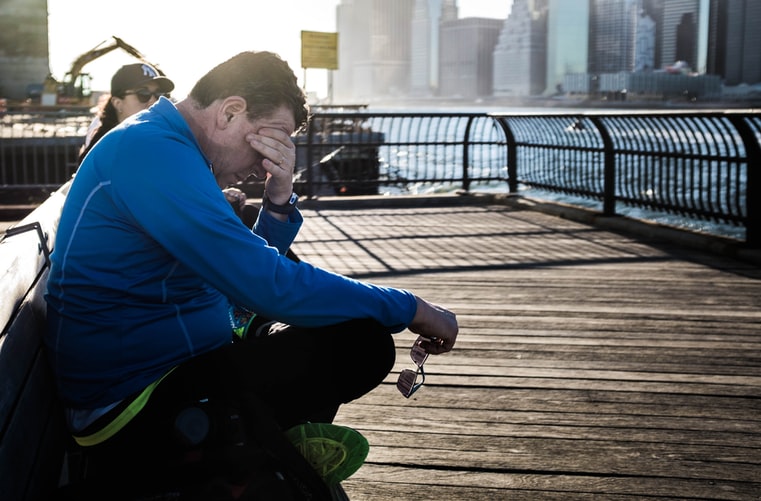
Treatment for Vestibular Dysfunction
Do you often feel dizzy or experience vertigo, motion intolerance, a persistent sense of imbalance, or unsteadiness? If so, there’s a chance you may have vestibular dysfunction. The good news is that these symptoms can be treated and you can regain your quality of life.
Vestibular dysfunction is more common than you may realize. A recent epidemiological study estimates that as many as 35% of adults over the age of 40 have experienced some form of vestibular dysfunction in their lives. Fortunately, most causes of dizziness can be detected through a comprehensive eye exam. It has been found that 85% of cases are due to inner ear disturbance (vestibular dysfunction) and can be treated using Vestibular Rehabilitation.
Neuro-rehabilitation therapy allows us to retrain your brain and eyes to regain functionality and quality of life for those suffering from visual problems due to vestibular rehabilitation. It works by using a variety of methods and techniques to get both eyes to work as a team and see visual space accurately. This form of therapy, known as neuro-optometric rehabilitation therapy, is an effective treatment for reducing or resolving symptoms associated with vestibular dysfunction.
If you have (or suspect you have) vestibular dysfunction and/or suffer from dizziness, unsteadiness or motion intolerance, talk to our team of eye doctors at EyeCare Associates. We can help.
But First, What is Vestibular Dysfunction and What Causes It?
 The vestibular system is made up of the peripheral vestibular organ (located in the inner ear), the vestibulocochlear nerve, the central vestibular organ and neural connections situated in the brainstem. When the inner ear sends the brain the wrong information or conflicting signals, the person tends to feel dizzy. As a result, the natural response is to limit movement in order to minimize the rocking or spinning sensation.
The vestibular system is made up of the peripheral vestibular organ (located in the inner ear), the vestibulocochlear nerve, the central vestibular organ and neural connections situated in the brainstem. When the inner ear sends the brain the wrong information or conflicting signals, the person tends to feel dizzy. As a result, the natural response is to limit movement in order to minimize the rocking or spinning sensation.
What Causes Vestibular Dysfunction?
Vestibular dysfunction is caused by damage to the vestibular system by disease, viral infection, high doses of certain antibiotics, stroke, degeneration of the inner ear’s balance function, blows to the head (such as concussions, brain trauma, whiplash) or some other unspecified cause(s). This results in a series of symptoms that impact all aspects of daily living.
If the system is damaged, vestibular disorders can result in one or more of these symptoms:
- Dizziness and vertigo
- Imbalance and spatial disorientation
- Cognitive and psychological changes
- Hearing changes
- Vision disturbance
Concentration, memory loss and fatigue can often accompany vestibular dysfunction. In order to keep the body upright, the brain needs to work extra hard and therefore compromises on other brain functions. Some people with vestibular dysfunction find it difficult to get out of bed, function properly at school and work or perform routine tasks in environments heavy in visual stimuli (think grocery stores, traffic, shopping malls). Thankfully, by undergoing Vestibular Rehabilitation Therapy these symptoms disappear along with the dizziness.
How is Vestibular Dysfunction Diagnosed and Treated/Rehabilitated?
Because inner-ear problems cause diverse symptoms such as vertigo, nausea and blurred vision, people with vestibular dysfunction spend years going from physician to physician, only to have their symptoms misdiagnosed as sinus, eye, neurological or psychological problems.
Neuro-optometrists specialize in understanding how specific visual dysfunctions relate to a patient’s symptoms and performance. At EyeCare Associates in Trumbull, Connecticut, our patients undergo a comprehensive evaluation by a neuro-optometric rehabilitation optometrist.
During the comprehensive eye exam, the neuro-optometrist will evaluate many functions of the visual system, such as:
- How well the eyes work together
- Whether the eyes are struggling to focus
- Eye scanning and tracking ability
- How the patient processes his/her surroundings and moves through it
- The connection between vision and balance
- Complex visual perceptual ability (how one organizes and interprets visual information and associates meaning and visual memory to it)
- Visual acuity, refraction, eye health evaluation, and peripheral vision testing
Following the examination, the neuro-optometrist will provide the patient with an individualized treatment plan, also known as neuro-optometric rehabilitation therapy. This therapy rehabilitates the visual, perceptual, and motor disorder and is great for patients of all ages.
The rehabilitation program incorporates in-office and at-home exercises for the remediation and management of the patient’s visual problems.
Vestibular Dysfunction often requires a multidisciplinary approach. In addition to neuro-optometrists, the rehabilitation team may include neurologists, rehab physicians, nurses, physical and occupational therapists, speech-language pathologists, neuropsychologists, and audiologists.
Neuro-Optometric Rehabilitation for Vestibular Dysfunction
After reviewing any relevant medical documentation from your neurologist, occupational therapist, physiotherapist, etc, our team of eye doctors will then perform a Neuro-Visual Assessment to identify and correct the underlying cause(s) of the disorder. The EyeCare Associates will then craft a personalized treatment plan for your recovery.
Vestibular Rehabilitation Therapy (VRT)
Vestibular rehabilitation therapy (VRT) or vestibular rehabilitation (VR) is the more targeted therapies within the larger neuro-rehabilitation therapy umbrella. VR or VRT is a carefully designed exercise-based therapy used to alleviate both the primary and secondary problems caused by vestibular disorders. The customizable program is designed to diminish vertigo and dizziness, enhance gaze stability, enhance postural stability and to improve activities of daily living.
VRT therapists, often working alongside the neuro-optometrist, look to improve visual skills while slowly adding tasks with different sensory-driven concepts. This therapy is made up of various head, body, and eye exercises specifically designed to retrain the brain to recognize and process signals from the vestibular system and coordinate them with vision cues. These exercises differ from person to person – each according to their personal needs and conditions.
 VRT is based on the idea that the very movements that make the patient dizzy can eventually relieve the symptoms through repetition. By repeatedly bombarding the brain with incorrect messages, the brain ultimately adapts, and reinterprets the faulty signals as correct. As a result, the symptoms subside.
VRT is based on the idea that the very movements that make the patient dizzy can eventually relieve the symptoms through repetition. By repeatedly bombarding the brain with incorrect messages, the brain ultimately adapts, and reinterprets the faulty signals as correct. As a result, the symptoms subside.
The VRT program includes a series of habituation exercises, such as jumping, sitting up and rapidly lying down, and spinning in circles. In addition to habituation exercises, vestibular rehabilitation patients are given eye exercises to retrain the vestibular ocular reflex, an adjustment controlled by the inner ear that ensures the eye keep the field of vision steady while the person is in motion. Eye exercises may involve moving the head from side to side or up and down repeatedly while focusing on a specific target in order to help steady the patient’s gaze.
The VRT exercise program is specifically built so that it can be performed at home. The better the patient complies with the home exercise program, the better the outcome and the quicker the rehabilitation.
Thanks to VRT, the vast majority of patients (80%) will experience a decrease in symptoms.
Our helpful, knowledgeable staff is always here to answer any questions you may have. Contact EyeCare Associates to schedule a consultation with our neuro-optometrist. If you’ve tried other types of therapies and nothing has worked, it’s time to see what our team of eye doctors can do for you.
Our practice serves patients from Connecticut, with offices in Trumbull, Stamford, Southport, and Norwalk, as well as in New York, serving Mahopac, Mt. Kisco and surrounding communities.References:
- Agrawal Y, Carey JP, Della Santina CC, Schubert MC, Minor LB. Disorders of balance and vestibular function in US adults. Arch Intern Med. 2009;169(10): 938-944.
- Herdman, S. J., & Whitney, S. L. (2007). Interventions for the patient with vestibular hypofunction. In S. J. Herdman (Ed.), Vestibular rehabilitation (3rd ed., pp. 309–337). San Francisco: Davis.









